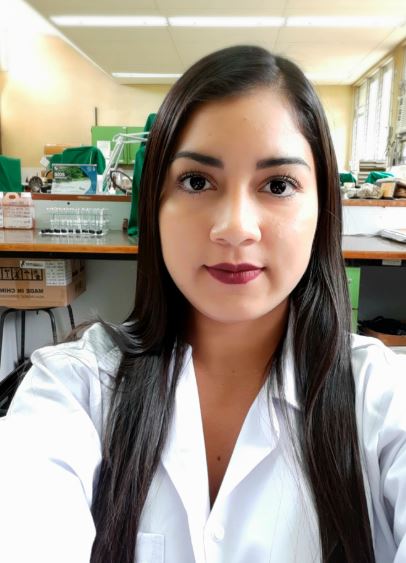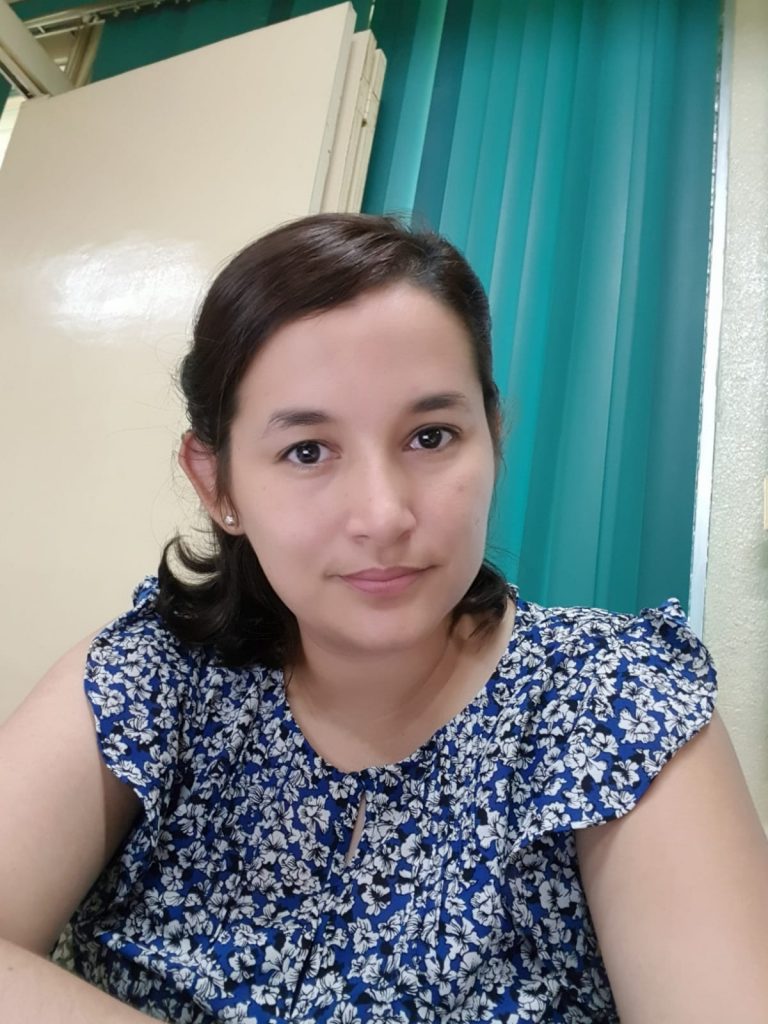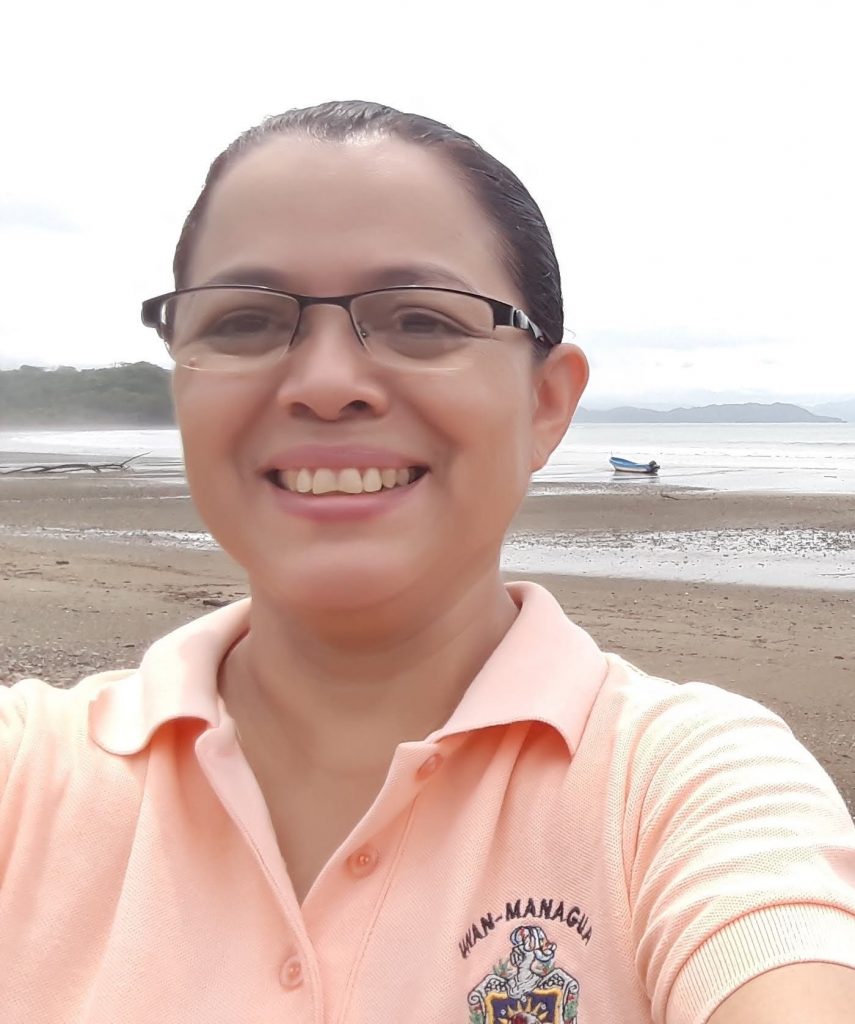Current Project: 2024 - 2027
RLA 7/028 – Strengthening Regional Capabilities on the Application of Nuclear and Isotopic Techniques to Increase Knowledge about Stressors that Affect Marine and Coastal Sustainable Management (ARCAL CLXXXIX)
Previous Projects:
RLA 7/025 – Strengthening Capacities in Marine and Coastal Environments Using Nuclear and Isotopic Techniques (2020-2023).
RLA 7/022 – Strengthening Regional Monitoring and Response for Sustainable Marine and Coastal Environments (ARCAL CXLV) (2018-2019).
RLA 7/020 - Establishing the Caribbean Observing Network for Ocean Acidification and its Impact on Harmful Algal Blooms, using Nuclear and Isotopic Techniques. (2014-2017)
RLA 7/014 – Designing and Implementing Systems for Early Warning and Evaluation of the Toxicity of Harmful Algal Blooms in the Caribbean Region, Applying Advanced Nuclear Techniques, Radioecotoxicological Evaluations and Bioassays (2009-2012).
RLA 7/012 – Use of Nuclear Techniques to Address the Management Problems of Coastal Zones in the Caribbean Region. (2007-2012)
Participating Institutions:
Universidad Nacional Autónoma de Nicaragua, Managua.


Research Areas:
- Ocean Acidification.
- Chemical Contamination.
- Harmful Algal Blooms (HABs) and Marine Biotoxins.
- Microplastic contamination.
THE PROBLEM
Nicaraguan seas and coasts are of great importance from a social, ecological and economic point of view, and as in other countries they face major environmental problems, among which are Harmful Algal Blooms (HABs), oceanic and coastal acidification and microplastic contamination.
HABs, such as those produced by the red tide, are massive growth events of phytoplanktonic organisms such as Pyrodinium bahamense y Phaeocystis that have been recorded more frequently in the country in recent years (2005, 2012, 2016 and 2018). The impacts of these events have generally been observed in the northern Pacific (Potosí, Corinto, Gulf of Fonseca) and range from fifty human poisonings, including the death of a child, to a reduction in environmental quality and in the effort fish catch due to foam formation and bad smell. These economic and human health damages limit the sustainable use of the country's natural resources, especially fisheries.
Ocean and coastal acidification, decreased pH or increased acidity, due to increased carbon dioxide content of seawater are processes that have accelerated in recent years due to a variety of man-made and natural mechanisms. Among these are the increase in the emission of combustion gases and the eutrophication produced by the discharges of fresh water from rivers or by the upwelling of deep waters rich in nutrients. This increase in the acidity of the water can soften the shells of mollusks and even bleach coral reefs, causing great economic and biodiversity damage. It is therefore very important to generate information on the pH and nutrients of sites where molluscs and crustaceans are being farmed, such as in the Gulf of Fonseca (Chinandega) and El Ostional (Rivas), where there is also potential for coastal acidification of natural origin due to upwelling.
Microplastics, small pieces generated from plastic bottles and bags, have been found in great abundance (up to 304 pieces/m2) in the form of polyethylene fragments in the sand of two beaches highly visited by national and foreign tourists, Masachapa (Managua ) and San Juan del Sur (Rivas). Plastic garbage pollution is a global problem that especially threatens marine life and human food security due to the ingestion and spread of these pollutants with no nutritional value and with the potential to contain other associated dangerous pollutants such as pesticides and metals. It is therefore very important to know the extent of contamination by microplastics, especially in fish, molluscs and crustaceans.
INFORMATION FOR ACTION
It is necessary for Nicaragua to carry out environmental monitoring on the Caribbean and Pacific coasts, as other Central American countries do, since this would allow recording information and implementing early warning systems on the occurrence and development of HAB events, acidification and contamination by nutrients and microplastics. This is possible through the strengthening of inter-institutional cooperation (MINSA, MARENA, INPESCA, IPSA-MAGFOR, Naval Force and CIRA/UNAN-Managua) and the formation of Commissions that allow facing the country's environmental problems with a multidisciplinary approach.
It is also important to disclose the results of these monitoring and the resolutions and communications of the Commissions that are formed to facilitate the understanding by the Nicaraguan society of the environmental problems that our coasts and seas suffer and the awareness of the role of the citizenship in strengthening environmental protection.
Country Members:
Katia Montenegro Rayo. Chemical Engineer, MSc. and PhD in Ecology, Specialization in Chemical Ecology and Ecotoxicology.

Centro para la Investigación en Recursos Acuáticos de Nicaragua, Universidad Nacional Autónoma de Nicaragua, Managua (CIRA/UNAN-Managua).
Role in the Project: National Coordinator Nicaragua.
Contact info: katia.montenegro@cira.unan.edu.ni /+505 22786981-82 Ext. 8323
Teacher-researcher since 1987. She has expertise in the areas of environmental quality of aquatic and terrestrial environments with emphasis on physical-chemical, biological characteristics and organic and metallic contaminants. Research interests that revolve around aquatic ecotoxicology and food safety and its risk analysis; with emphasis on estimating the effects of pollutants on the interactions between populations and communities; structural and functional parameters that determine the quality and fertility of aquatic and terrestrial ecosystems; and assessment of exposure to chemical contaminants. She has conducted research in the areas of environmental quality and feasibility of bioremediation efforts in aquatic and terrestrial ecosystems. She has taught undergraduate and graduate degrees and has extensive experience in the use of various analytical techniques and their quality control. She was the national counterpart in the RLA 7/022 project where she was trained in communication product design.
Yader Caballero Arbizú. Bachelor of Chemistry, MSc. in Water Sciences.

Laboratorio de Radioquímica Ambiental, Centro para la Investigación en Recursos Acuáticos de Nicaragua, Universidad Nacional Autónoma de Nicaragua, Managua (CIRA/UNAN-Managua).
Role in the Project: Ocean Acidification Component Coordinator.
Contact info: yadercaballero@cira.unan.edu.ni / +505 22786891-82 Ext. 8340
Teacher-researcher since 2000. Expert in sampling, analysis and interpretation of physical-chemical parameters in sediments and soils. He has received training on the application of nuclear techniques for the management of water resources, radiochronology of environmental changes in coastal sediments, analysis of saxitoxins by the RBA technique and evaluation of ocean acidification in coastal ecosystems, sampling strategy and analysis. He has carried out research projects on erosion and sedimentation using nuclear techniques of 210Pb and 137Cs and evaluation of environmental quality in freshwater, coastal and marine ecosystems. He has taught undergraduate and postgraduate courses, tutored and advised thesis on topics related to his expertise. He is part of the work teams of the research lines of quality and contamination of water resources, limnology, quality of marine-coastal resources and food safety and human health.
Josseth Díaz Domínguez. Bachelor of Chemistry, MSc. Environmental management.

Laboratorio de Contaminantes Orgánicos, Centro para la Investigación en Recursos Acuáticos de Nicaragua, Universidad Nacional Autónoma de Nicaragua, Managua (CIRA/UNAN-Managua).
Role in the Project: Microplastics Component Coordinator.
Contact info: josseth.diaz@cira.unan.edu.ni / +505 22786891-82 Ext. 8351
Professor-researcher at CIRA/UNAN-Managua since 2012. Analytical expertise in chromatographic techniques (gas and liquid) for the determination of organic contaminants (pesticide residues and total petroleum hydrocarbons) in environmental matrices (water, soil, sediment, tissue biological) and food. Recently trained in the RLA 7/022 project in physical-chemical characterization of microplastics in environmental matrices using infrared spectroscopy and direct observation microscopy. Coordinator of the Food Safety and Human Health research line and member of the work teams of the Quality of marine-coastal resources and Chemometrics and quality management lines. He has tutored thesis on organic pollutants and analytical quality control.
José Daniel Henríquez Gago. Bachelor of Sciences in Education with mention in Educational Informatics, MSc. in ICT Resources Management.

Área de Investigación y Desarrollo, Centro para la Investigación en Recursos Acuáticos de Nicaragua, Universidad Nacional Autónoma de Nicaragua, Managua (CIRA/UNAN-Managua).
Role in the Project: Collaborator in Communication component (ICT)
Contact info: jose.henriquez@cira.unan.edu.ni ; henriquezjose18@gmail.com /
+505 22786981-82 Ext. 8301
Soporte Técnico en Computación en el CIRA/UNAN-Managua desde el año 2016. Cuenta con experiencia en el diseño, administración de sitios web y gestión de plataformas educativas. Habilidades en el manejo de herramientas de diseño gráfico para la elaboración de materiales para divulgación del quehacer científico. Realiza tareas de Community manager gestionando los perfiles de redes sociales. Colabora en el diseño, maquetación editorial y soporte técnico de la Revista Científica Agua y Conocimiento que opera bajo la plataforma OJS (Open Journal System). Ha ejercido docencia de grado y posgrado desarrollando temas relacionados a las Tecnologías de la Información y Comunicación.
Marjorie Hernández Rodríguez. Bachelor in Biology

Laboratorio de Hidrobiología, Centro para la Investigación en Recursos Acuáticos de Nicaragua, Universidad Nacional Autónoma de Nicaragua, Managua (CIRA/UNAN-Managua).
Role in the Project: Collaborator in HAB and Microplastic Components.
Contact info: marjorie.hernandez@cira.unan.edu.ni / +505 22786981-82 Ext. 8345
She is a specialist in hydrobiological analysis since 2017. Experience in the taxonomic identification of organisms used as indicators of water quality, mainly phytoplankton and phytobenthos in freshwater and marine samples. She was assessed as Proficient in Seaweed Counting and Identification in 2019 by the Galway Marine Institute (Ireland). She participated in the RLA 7/022 project carrying out the counting and physical characterization of microplastics by direct observation microscopy in beach sands of the Nicaraguan Pacific. She is part of the work team of the research lines Limnology of lentic and lotic systems, and Quality of marine-coastal resources.
Jonathan Herrera Merlo. Bachelor of Chemistry.

Laboratorio de Aguas Naturales, Centro para la Investigación en Recursos Acuáticos de Nicaragua, Universidad Nacional Autónoma de Nicaragua, Managua (CIRA/UNAN-Managua).
Role in the Project: Collaborator of the Ocean Acidification Component.
Contact info: jonathan.herrera@cira.unan.edu.ni / +505 22786891-82 Ext. 8348-49
Specialist in physical-chemical analysis since 2015. Experience in sampling, analysis and interpretation of results of physical-chemical parameters for human consumption, protection of aquatic life, irrigation and livestock uses. Expert in chemical metrology, experience in the preparation of samples for intercomparison tests and statistical analysis of analytical results, construction of databases for the quantification and estimation of the uncertainty of chemical measurements. He has coordinated and participated in research projects on water quality and analytical quality control. He is co-coordinator of the Chemometrics and quality management research line and member of the work teams of the Quality and contamination of water resources, Quality of marine-coastal resources and Food safety and human health lines. He is part of the group of experts on Uncertainty that develops the protocols for the quantification of the parameters that influence ocean acidification.
Jairo López Palma. Bachelor of Biology.

Laboratorio de Hidrobiología, Centro para la Investigación en Recursos Acuáticos de Nicaragua, Universidad Nacional Autónoma de Nicaragua, Managua (CIRA/UNAN-Managua).
Role in the Project: HABs and Eutrophication Components Collaborator/Thesis student.
Contact info: jairo.lopez@cira.unan.edu.ni / +505 22786981-82 Ext. 8345
Specialist in hydrobiological analysis since 2010: Expert in taxonomy of benthic macroinvertebrates in lentic, lotic and marine ecosystems and their use as indicators of water and sediment quality. He is part of the work teams of the lines of research "Quality of marine-coastal resources" and "Limnology of lentic and lotic ecosystems". He has collaborated in the sampling carried out in marine-coastal environments since the RLA 7/014 project and is doing his Master's thesis in the context of RLA 7/025 (Water quality with emphasis on eutrophication indicators and species linked to HAB events in Laguna de Perlas, Autonomous Region of the South Caribbean Coast, Nicaragua).
Xaviera de Jesús Méndez Doña. Bachelor's Degree in Chemistry.

Laboratorio de Mercurio Ambiental, Centro para la Investigación en Recursos Acuáticos de Nicaragua, Universidad Nacional Autónoma de Nicaragua, Managua (CIRA/UNAN-Managua).
Role in the Project: Thesis student and collaborator in the project.
Contact info: x.mendez@cira.unan.edu.ni / +505 22786981-82 Ext. 8344
She is a specialist since 2012 in Laboratory Analysis with an emphasis on techniques for the study of mercury and methylmercury. Experience in the implementation and adaptation of analytical techniques that allow the investigation of organic and inorganic contaminants in different environmental matrices. She has received training at the National Institute for Minamata Disease, Japan during the project "Strengthening capacities in the study and analysis of mercury. Experience in conducting sampling in continental and marine-coastal waters. She is part of the work teams of the lines of research "Quality of marine-coastal resources", "Limnology of lentic and lotic ecosystems" and "Quality and contamination of water resources, sediments and soils". She is doing her Master's thesis in the context of RLA 7/025 (Quality of water and sediments in Laguna Perlas aquaculture sites, based on organic pollutants, physical-chemical parameters and biological indicators).
María Teresa Salas Moncada. Bachelor in Biology

Laboratorio de Hidrobiología, Centro para la Investigación en Recursos Acuáticos de Nicaragua, Universidad Nacional Autónoma de Nicaragua, Managua (CIRA/UNAN-Managua).
Role in the Project: Collaborator in sampling and HABs component.
Contact info: mariateresa.salas@cira.unan.edu.ni / 505 22786891-82 Ext. 8345
Expertise on hydrobiological analysis and water sampling for different uses since 2015. Experience in plankton taxonomic identification and use of biological indicators and community structure for water quality evaluation, specialized on zooplankton of lentic, lotic and marine ecosystems. She is a member in the research groups "Limnology of lentic and lotic ecosystems" and "Quality of marine and coastal resources" and collaborates as an ISO 17025:2017 internal auditor. She is currently working on her Master's thesis on Environmental management with the theme "Plankton community structure and natural diet of zooplanktonic crustaceans in Lake Cocibolca".
Karla Sarria Sacasa. Bachelor's Degree in Chemistry.

Laboratorio de Contaminantes Orgánicos, Centro para la Investigación en Recursos Acuáticos de Nicaragua, Universidad Nacional Autónoma de Nicaragua, Managua (CIRA/UNAN-Managua).
Role in the Project: Collaborator in Microplastics Component.
Contact info: karla.sarria@cira.unan.edu.ni / +505 8888 1678
She has been a professor-researcher at CIRA/UNAN-Managua since 1997. Analytical expertise in Gas Chromatography and various Atomic Absorption techniques (flame, graphite furnace, hydride generator) for the determination of organic contaminants (pesticide residues and total Hydrocarbons oil) and metals (Aluminum, Arsenic, Cadmium, Copper, Chromium, Manganese, Nickel, Lead, Mercury, Selenium and Zinc) in environmental matrices (water, soil, sediment, biological tissue) and food. She collaborated in the RLA 7/022 project in the extraction and physical characterization of microplastics in beach sand. She is a member of the work teams of the lines Quality and contamination of water resources, sediments and soils and Chemometrics and quality management.
Progress and Challenges
The implementation of environmental quality monitoring in marine and coastal ecosystems in Nicaragua is necessary to contribute to their sustainable management. This can be done by strengthening inter-institutional collaboration that allows i) recognition of the importance of monitoring SDG 14 indicators (with emphasis on 14.1 and 14.3), ii) the collection and integration of reliable data and, if reportable to the United Nations. These monitoring will produce baseline information on indicators of eutrophication, acidification, contamination by microplastics and phytoplankton species linked to Harmful Algal Blooms (HABs) events.
